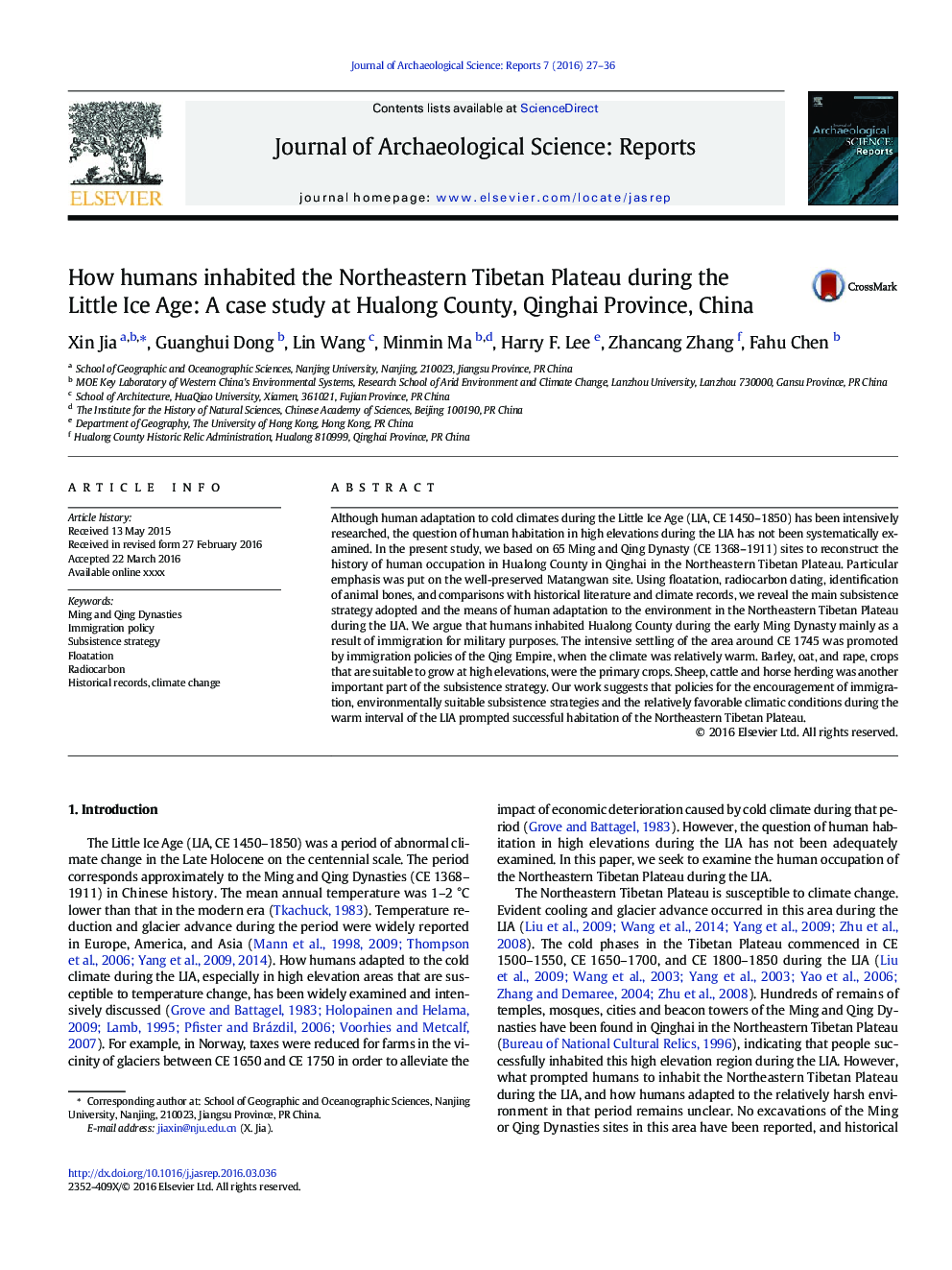| Article ID | Journal | Published Year | Pages | File Type |
|---|---|---|---|---|
| 7446094 | Journal of Archaeological Science: Reports | 2016 | 10 Pages |
Abstract
Although human adaptation to cold climates during the Little Ice Age (LIA, CE 1450-1850) has been intensively researched, the question of human habitation in high elevations during the LIA has not been systematically examined. In the present study, we based on 65 Ming and Qing Dynasty (CE 1368-1911) sites to reconstruct the history of human occupation in Hualong County in Qinghai in the Northeastern Tibetan Plateau. Particular emphasis was put on the well-preserved Matangwan site. Using floatation, radiocarbon dating, identification of animal bones, and comparisons with historical literature and climate records, we reveal the main subsistence strategy adopted and the means of human adaptation to the environment in the Northeastern Tibetan Plateau during the LIA. We argue that humans inhabited Hualong County during the early Ming Dynasty mainly as a result of immigration for military purposes. The intensive settling of the area around CE 1745 was promoted by immigration policies of the Qing Empire, when the climate was relatively warm. Barley, oat, and rape, crops that are suitable to grow at high elevations, were the primary crops. Sheep, cattle and horse herding was another important part of the subsistence strategy. Our work suggests that policies for the encouragement of immigration, environmentally suitable subsistence strategies and the relatively favorable climatic conditions during the warm interval of the LIA prompted successful habitation of the Northeastern Tibetan Plateau.
Related Topics
Social Sciences and Humanities
Arts and Humanities
History
Authors
Xin Jia, Guanghui Dong, Lin Wang, Minmin Ma, Harry F. Lee, Zhancang Zhang, Fahu Chen,
